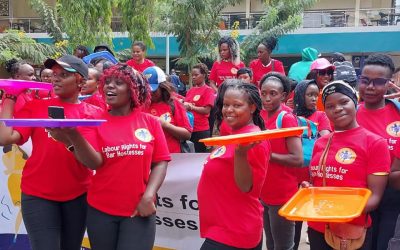Most women do not know that pre-exposure prophylaxis (PrEP) may be an HIV prevention option for them, panelists noted at the recent PrEP for Women: The San Francisco Story webinar sponsored by HIVE. Prevention messages around San Francisco are primarily targeted at men who have sex with men. The San Francisco Department of Public Health does not even cover the cost of HIV testing for women. To help educate women about PrEP, PleasePrEPMe.org has prepared a customizable palm card with basic facts about this HIV prevention method.
For many women, reproductive health services, especially during pregnancy, are the primary link into the health care system. In fact, 40% of women in the U.S. only see reproductive health providers, said Dominika Seidman, M.D., M.A.S., of the University of California, San Francisco. Yet HIV prevention training is not included in obstetrician/gynecologist education, as she found out during her own schooling. PrEP advocates must talk to both women and health care providers, emphasized Miranda Nordell of the San Francisco Health Network. To facilitate provider education, HIVE has assembled PrEP resources for health care providers. In addition, a “culture shift” is needed so providers will initiate a discussion about PrEP even if their patients do not ask about it, Jennifer Sarchet of Planned Parenthood Northern California observed. PrEP must simply become one of the various reproductive services offered.
For women who use intravenous drugs, PrEP medication could be provided through the existing structure for dispensing methadone, Deborah Borne, M.D., M.S.W., of the San Francisco Department of Public Health noted. People could be screened for this prevention method during counseling sessions at methadone clinics. Three of the four new HIV acquisitions at her Opiate Treatment Outpatient Program were among women, Claire Simeone noted. Half of the clients at that clinic are homeless, with women more likely than men to lack housing.
In San Francisco, 7-13% of those without permanent housing live with HIV, Borne said. Sixty-three percent of homeless people living with HIV are virally suppressed, showing that adherence to PrEP is possible even under these circumstances. Community partnerships between homeless outreach groups and clinics can facilitate PrEP promotion. HIV prevention medication could also be made available at drop-in clinics or in similar settings.
Medication-based HIV prevention is offered to people as young as 12 years old, Nordell reported. This method can be especially empowering to young women who have trouble negotiating condom use. Her organization integrates PrEP into other youth programs to facilitate its acceptance among that population. It also disseminates information in women’s shelters, at sexual assault services, in college residence halls and through high school health groups to reach those most at risk of acquiring HIV.
HIVE offers a variety of resources on PrEP for women, advocates and clinicians. The organization’s page about this webinar also provides links to various other resource websites. Another source of information is the Well Project’s fact sheet on PrEP for women.
http://www.thebody.com/content/79287/san-francisco-women-need-to-learn-about-prep-panel.html



